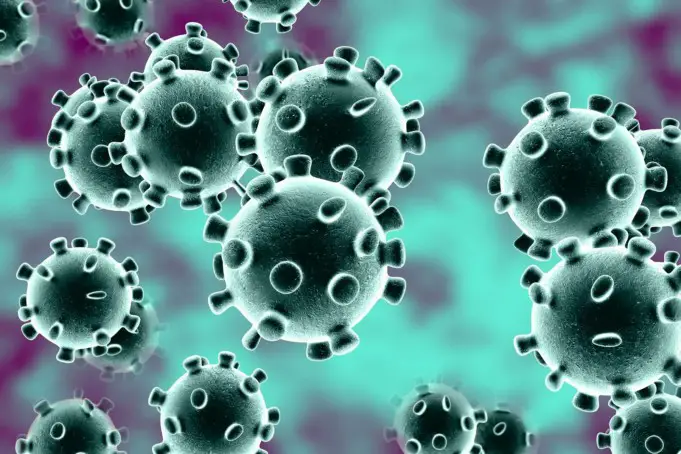Coronaviruses are a type of virus that mainly affects the respiratory tract of humans and other mammals. These viruses are associated with pneumonia, common cold, and severe acute respiratory syndrome (SARS) and may also affect the gut.
Checkout this article on how to boost your immune system to help fight the virus.
The first time a coronavirus was isolated was in 1937 from a highly infectious bronchitis virus in birds. The virus could devastate poultry animals seriously.
These coronaviruses are found to be responsible for around 15 and 30 per cent of reported common colds.
Over the last seven decades, scientists have discovered that coronaviruses can infect rats, mice, cats, dogs, turkeys, cattle, horses, and pigs.
Fast facts on coronaviruses
- There is no known cure for the common cold, which is a significant symptom of coronaviruses.
- A coronavirus is responsible for both SARS and MERS and the recent coronavirus outbreak in china.
- Coronaviruses can infect many different species of animals.
- There are now seven known human coronaviruses.
- SARS started in China and spread to cause infection in 37 countries, causing the death of 774 people.
What are coronaviruses?
Human coronaviruses (HCoV) were identified first in the 1960s in the noses of people who reported having a common cold. There are two human coronaviruses identified to be responsible for a large proportion of the common cold OC43 and 229E.
Coronaviruses were named based on the crown-like projections they have on their surfaces. The word “Corona” is Latin for “halo” or “crown.”
Among humans, coronavirus infections mostly occur during the last and first few months of the year, or during winter and early spring. It is not rare for a person to fall ill with a cold that is triggered by a coronavirus and also catch it again four months later.
This is so because the antibodies for coronavirus do not last for a long time. Also, an antibody or antibodies for a single strain of coronavirus may not be useful against other strains.
Symptoms
Cold- or flu-like symptoms will mostly set in between two to four days after a coronavirus infection, and they are usually mild.
Symptoms of coronaviruses include;
- Sneezing
- Runny nose
- Fatigue
- Cough
- In rare cases, fever
- Sore throat
- Exacerbated asthma
Human coronaviruses are not easily cultivated in the laboratory, unlike the rhinovirus, which is yet another identified cause of the common cold. This makes it hard to gauge the impact of coronavirus’ on public health and national economies.
There is no cure for coronaviruses, so the only available treatments include taking proper care of yourself by maintaining good personal hygiene such as hand washing and using over-the-counter (OTC) medication. Here are some treatment methods to try:
- Rest and avoid overexertion.
- Drink enough water.
- Avoid smoking and smoky areas.
- Take acetaminophen, ibuprofen or naproxen to reduce pain and fever.
- Use a clean humidifier or cool mist vaporiser.
The coronavirus that is responsible for an illness can be diagnosed by collecting a sample of respiratory fluids, like mucus from the nose, or blood.
Types of coronaviruses
Different types of human coronaviruses vary according to the severity of illness that they cause and how far their spread can be.
There are six types of coronavirus currently recognized that can infect humans. A seventh might be found with the latest outbreak.
Common types include:
- 229E (alpha coronavirus)
- NL63 (alpha coronavirus)
- OC43 (beta coronavirus)
- HKU1 (beta coronavirus)
Rarer, and more dangerous types of coronavirus include MERS-CoV, which was responsible for the Middle East Respiratory Syndrome (MERS), and (SARS-CoV), which was responsible for severe acute respiratory syndrome SARS.
There hasn’t been enough research on the spread of human coronavirus from one person to the next.
However, it is strong suspicion that the viruses transmit with the medium of secreted fluid from the human respiratory system.
Coronaviruses can spread in the following ways:
- Sneezing and coughing without covering the mouth can spread droplets into the air, and cause the virus to spread.
- Touching or shaking hands with someone who has the virus can spread it from one person to another.
- Making direct contact with an object or a surface that has the virus and touching your nose, mouth or eyes.
- On rare occasions, a coronavirus can spread through contact with faeces.
People lining in the U.S. are at greater risk of contracting the disease during winter or fall. The disease is very active all year round.
Young people are also more likely to get a coronavirus, and a person can get more than one coronavirus infection throughout a lifetime.
It is believed that most people will get at least one coronavirus infection in their life. It is suspected that the coronavirus’s mutating abilities are what make them so contagious.
To prevent transmission, it is best to stay at home and relax while manifesting symptoms and avoid any form of personal contact with other people. When coughing or sneezing, make sure to use a handkerchief or tissue for covering the mouth and nose.
Be sure to carefully dispose of all used handkerchiefs or tissues and maintain proper hygiene around the house.
Coronavirus Representative species
- The Middle East respiratory syndrome-related coronavirus
- SARS coronavirus
- Human coronavirus 229E
- Mouse hepatitis virus
- Transmissible gastroenteritis virus
- Porcine epidemic diarrhea virus
- Alphacoronavirus 1
- Bulbul coronavirus HKU11
- Murine coronavirus
- Miniopteru
You can check the progress of the virus with this nice looking map.












